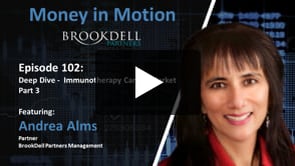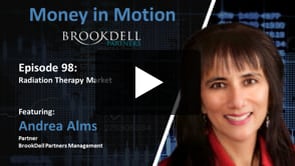Managed Futures Dashboard:
Top Managed Futures News, Listings, Member Posts, Managed Futures Daily Indices and more!
Low Volatility Needs Little Trading
- Pim van Vliet
- Journal of Portfolio Management
- A version of this paper can be found here
- Want to read our summaries of academic finance papers? Check out our Academic Research Insight category
What are the research questions?
Low volatility strategies have garnered a fair amount of popularity and a growing body of supporting research. Studies have shown risk reduction levels of 25%, while turnover has varied from 20% to 120%. However, higher turnover produces higher costs of trading, such that the excess return obtained with low volatility products may actually be subsumed by those same trading costs. The authors of this study ask how much trading is needed to build and maintain a low volatility product.
- How much turnover is associated with low volatility stocks?
- How liquid are low volatility stocks?
- What is the cost of trading low volatility stocks?
- What is the relationship between turnover and volatility reduction?
What are the Academic Insights?
- NOT MUCH. Turnover for high volatility stocks is approximately 4 times that of low volatility stocks. Low volatility stocks have an average turnover of 77% compared to 281% for high volatility stocks. The relationship appears strong with a group correlation of 99.6% between turnover and level of volatility.
- VERY LIQUID. Traded dollar volume for low volatility stocks is 30% higher than high volatility stocks.
- CHEAPER THAN AVERAGE BY 3BPS. A typical low-volatility stock is cheaper to trade because they tend to have higher market capitalizations, roughly 5 times larger than high volatility stocks. Low volatility stocks average US$23bil versus US$5bil for high vol. The authors estimate average transaction costs at 11bps for low volatility, 7 bps for super-large stocks, and 14 for the average stock However, these estimates can be mitigated when the size of AUM$ are considered.
- CONCAVE. Exhibit 5 shows the concave relationship between turnover and risk reduction for 8 simulated portfolios. Turnover varies from 11% to 32% while the reduction in volatility ranges from 22% to 28%. As turnover increases, smaller and smaller marginal exposure to low volatility results.
Why does it matter?
Turnover beyond a value of 32% per year, perhaps to satisfy a desire to justify fees or demonstrate investment skill, is inadvisable. The evidence presented here suggests that it may instead be a signal of an inefficient portfolio construction process for single factor-low volatility portfolios.
However, there are valid reasons for a manager to increase turnover in a low volatility strategy in order to integrate other factors.
So stay tuned for Part 2: Turnover related to the integration of Value + Momentum + Low Volatility exposures.
The most important chart from the paper
-
The results are hypothetical results and are NOT an indicator of future results and do NOT represent returns that any investor actually attained. Indexes are unmanaged and do not reflect management or trading fees, and one cannot invest directly in an index.
Abstract
An efficient low-volatility strategy only needs a little amount of trading. The empirical literature on low-volatility investing reveals a concave relation between the amount of trading and the risk reduction. Portfolio simulations confirm this non-linear pattern in which each increase in turnover results in smaller marginal reductions in volatility. In general a moderate trading level of 30% is enough to reduce portfolio volatility by 25% compared with the market index. In addition, low-volatility stocks are relatively liquid and cheap to trade, primarily because they are much larger than the average stock. The law of diminishing returns also applies to other alpha factors such as value and momentum and integrating them into a multi-factor low-volatility strategy is an efficient way to increase factor exposure at low trading costs.
- The views and opinions expressed herein are those of the author and do not necessarily reflect the views of Alpha Architect, its affiliates or its employees. Our full disclosures are available here. Definitions of common statistics used in our analysis are available here (towards the bottom).
- Join thousands of other readers and subscribe to our blog.
- This site provides NO information on our value ETFs or our momentum ETFs. Please refer to this site.
Low Volatility Can Be Low Turnover was originally published at Alpha Architect. Please read the Alpha Architect disclosures at your convenience.
Today's Managed Futures Headlines:
Access Over 250K+ Industry Headlines, Posts and Updates
Join AlphaMaven
The Premier Alternative Investment
Research and Due Diligence Platform for Investors
Free Membership for Qualified Investors and Industry Participants
- Easily Customize Content to Match Your Investment Preferences
- Breaking News 24/7/365
- Daily Newsletter & Indices
- Alternative Investment Listings & LeaderBoards
- Industry Research, Due Diligence, Videos, Webinars, Events, Press Releases, Market Commentary, Newsletters, Fact Sheets, Presentations, Investment Mandates, Video PitchBooks & More!
- Company Directory
- Contact Directory
- Member Posts & Publications
- Alpha University Video Series to Expand Investor Knowledge
- AUM Accelerator Program (designed for investment managers)
- Over 450K+ Industry Headlines, Posts and Updates







